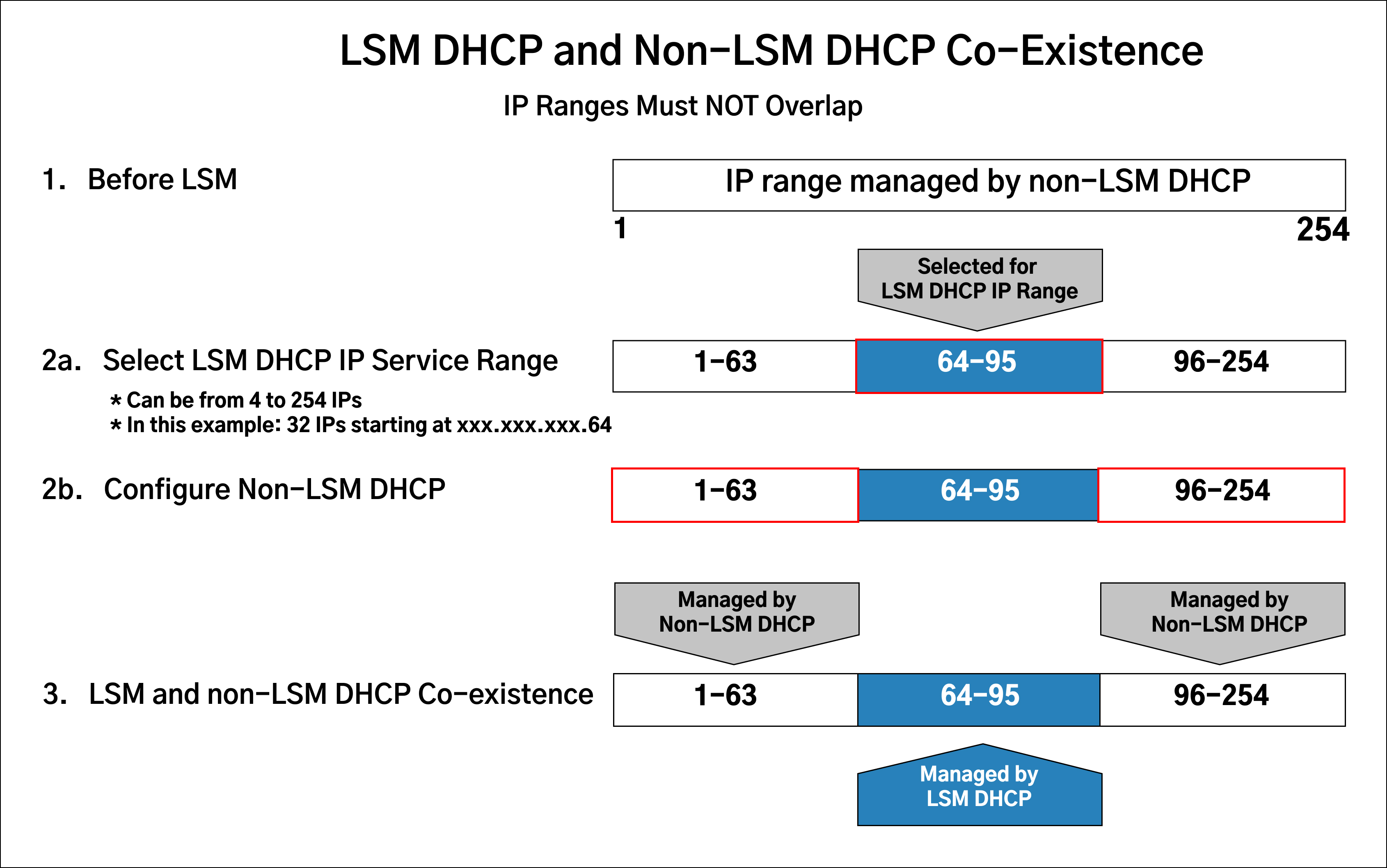DHCP Overview:
•LSM does not require external DHCP service
•LSM provides its own DHCP service that:
oProvides a static IP service to Machines being serviced by LSM in the "LSM DHCP IP Service Range"
oIncludes a PXE listener on port 69
oDoes not use leases
oDoes not broadcast to other DHCP services
•If you have an existing DHCP service, it must be configured to exclude the IPs in your LSM DHCP IP Service Range
Requirements for Existing DHCP service co-existence with LSM's DHCP:
•The LSM PXE server must be the only PXE listener on the LSM subnet or have PXE requests managed via network forwarders or other means such as orchestrated subnet relocation of Machines to and from the LSM subnet.
•Any and all other DHCP services on the LSM subnet must exclude the designated LSM DHCP IP Service Range and provide no DHCP responses for these IPs. There are multiple DHCP requests during LSM servicing and DHCP responses other than LSM's can interrupt and stop the LSM service mid-cycle.
Contact your network administrator for assistance with DHCP configuration. The syntax for your DHCP server may be different from the example provided below:
# Example Linux DHCP configuration exclusion where LSM IP range is 192.168.49.32 to 192.168.49.87
...
subnet 192.168.25.0 netmask 255.255.255.0 {
pool {
range 192.168.49.1 192.168.49.31;
}
# NOTE: LSM IP range 192.168.49.32-.87 must be excluded, reserved for LSM service use
subnet 192.168.49.0 netmask 255.255.255.0 {
pool {
range 192.168.49.88 192.168.49.254;
}
}
Search keyword(s): dhcp_requirements
